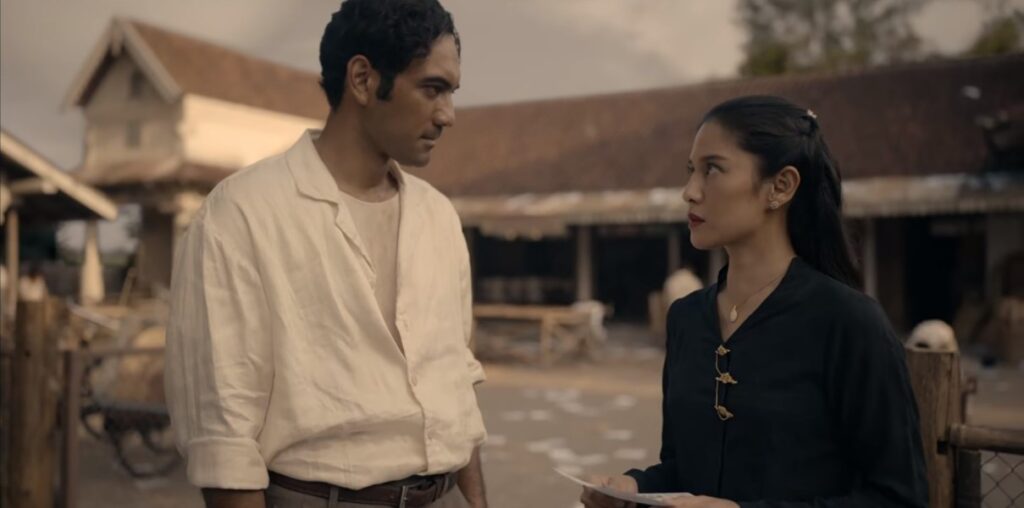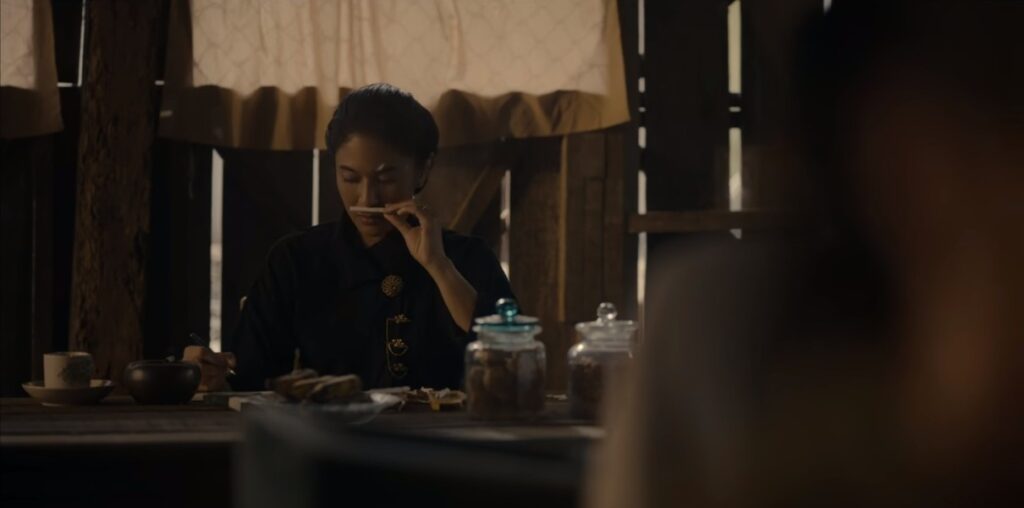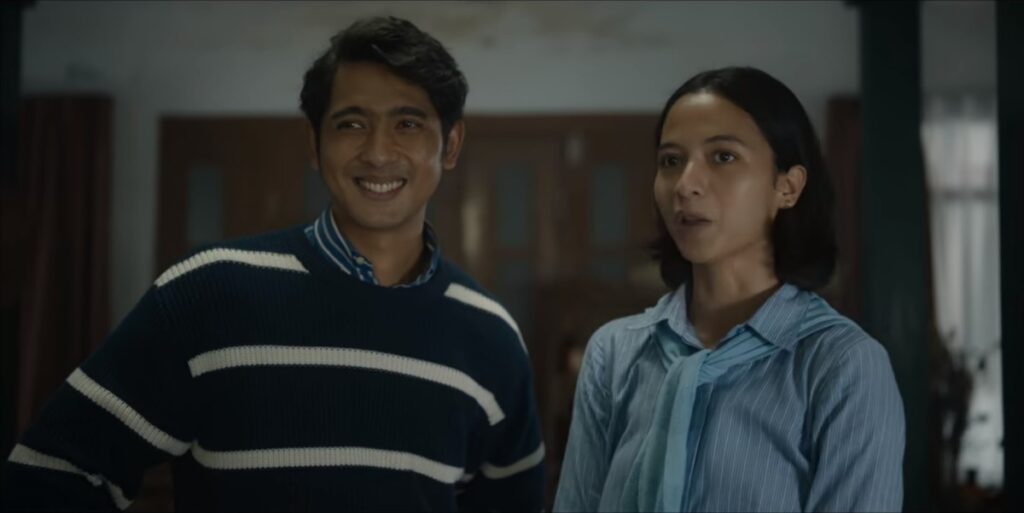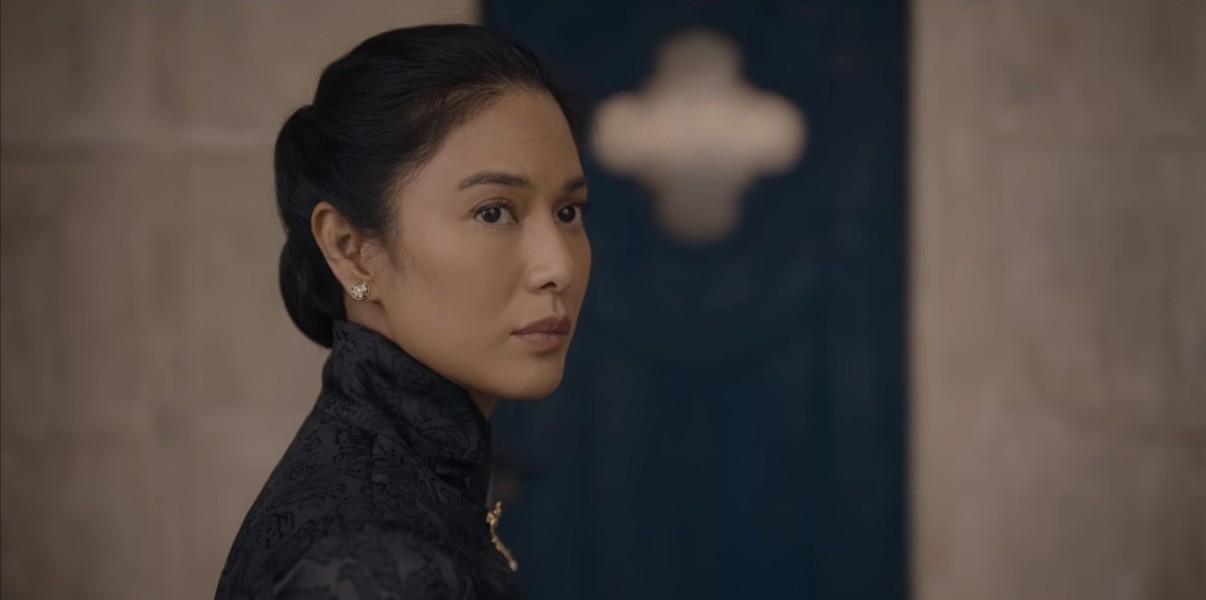Cigarette Girl (Gadis Kretek) is an Indonesian drama series which is based on the novel by Ratih Kumala. It is directed by Kamila Andini and Ifa Isfansyah, and produced by BASE Entertainment with showrunners Shanty Harmayn and Tanya Yuson. Ratih Kumala and Tanya Yuson also served as screenwriters along with Kanya K. Priyanti and Ambaridzki Ramadhantyo. There are episodes in the series with a runtime of about 60-74 minutes.
The ensemble cast of the series includes Dian Sastrowardoyo as Dasiyah/Jeng Yah, Ario Bayu as Soeraja, Arya Saloka as Lebas, Putri Marino as Arum, Ibnu Jamil as Seno, Sheila Dara Aisha as Purwanti, Tissa Biani as Rukayah, Nungki Kusumastuti, Ine Febriyanti as Roemaisa, Rukman Rosadi as Idroes Moeria, Tutie Kirana, Pritt Timothy, Winky Wiryawan as Tegar, Dimas Aditya as Karim and Verdi Solaiman as Soedjagad.

Cigarette Girl Review
The series starts by following a mysterious woman wearing a white outfit and moving across a party hall as if looking for something. Before we could know who she is, the scene cuts to an old man in critical condition, lying on his bed with an oxygen mask. His son Lebas comes to his aid and the man gives him an old tin can and pleads him to find Jeng Yah before it’s too late.
We get to know that it’s the year 2001 in Jakarta and the old man is named Soeraja, owner of a big cigarette company. He is suffering from cancer and does not have much time left to live, thus, his last wish is to find the mysterious lady with whom he lost contact.
Lebas is the youngest of the three brothers and is least bothered with taking care of the company. Yet he decides to make his father’s last wish come true and treads on a journey to find Jeng Yah. The only clues in his hand were a group photo and a few letters/ diary entries from the mystery lady and his father. Through the content of the letters, we travel back to the 1960s and into the world of Dasiyah, a woman ahead of her time who is passionate about concocting the perfect formulas for clove cigarettes.
Her family owns a cigarette factory and she assists her father in the business, despite women being looked down upon for doing anything else than maternal duties. She has a keen eye and artisanal abilities to concoct new flavours of cigarettes but due to her gender, she is restricted from even entering the blue doored flavour room. She is quite ambitious with good business sense and craves to have the freedom to run the business. However, societal stereotypes restrict her from fulfilling her desire.

Also Read: Tore Review: William Spetz’s Emotionally Tumultuous Journey With Grief and Changes
Her rigid life takes a turn for good when she asks her father to help a man getting beaten down in the market. He turns out to be Soeraja and soon learns the craft and trade of cigarette making while living with Dasiya’s family. Unexpectedly, the new stranger starts to understand her much better than anyone else and supports her dreams without any judgment. It leads to a love story marked by historical events that eventually shape the course of their lives for better or for worse.
Now, decades later, Soeraja is trying to find his long-lost love, before death takes him away. Thus, Lebas embarks on a journey with a new acquaintance Arum, as together they trace the past and uncover buried secrets. He visits the museum which keeps records of the booming tobacco industry in the 1960s and takes the help of Arum, the person who might be related to the mysterious lady he has been chasing around.

The way past events are explored through the diary entries/letters is quite creative rather than simple flashbacks of someone remembering the old days. And instantly we are enthralled by stoic Dasiya and a warm Soeraja. They find comfort in each other and try to make each other’s dreams come true but fate and wrong decisions lead them away from each other. It’s not just a love story but a reflection of the society in those times and how women like Dasiya suffered at the hands of it.
Many times the story and the setting would often feel reminiscent of the classic Bollywood love stories set against the backdrop of Independence. As enchanting the past story may be, the leads portraying the present life while tracking history are equally commendable. Between the tense and emotion-filled past memories, they bring a brief respite and raise the curiosity to know more. Another small element that’s recurring in the series is the colour and pattern of the clothes that the characters wear.
Initially, Dasiya only wears black coloured clothes most of the time and Soeraja is often seen in white and beige combinations. However, once she starts growing feelings for him, we catch her in white outfits sometimes. Only later, when she is completely in love with him she is seen only in white outfits. Similarly, Lebas and Arum sport something blue in their outfits. Lebas is seen in navy blues and Arum in light blues.
Initially, they both wear striped items which could indicate their state of mind at the moment. It often means that a lot of things are going on in their lives and they are unsure of what they are doing yet putting on a confident front. As some of their own personal issues resolve with time, the stripes turn into solid colour outfits with some element of each other’s blue. Personally, I really liked these subtle touches along with the music and perfect pace of the story.

The only issue I have with the show is its title. It doesn’t do any justice to the soul-stirring story that it presents. I would have rather named it Jeng Yah than a generic name like Cigarette Girl, which doesn’t translate the depth of Dasiya or her struggles. Other than that, I would highly recommend watching this show in our own time. I couldn’t commend the seemingly predictable yet highly complicated story enough, which has quite perfect pacing, applaudable acting and evocative music.
Rating – 5/5
Cigarette Girl is available for streaming on Netflix.
Also Read: Till Murder Do Us Part Soering vs Haysom Review: Jens and Elizabeth’s Intense Love & Animosity

Leave a Reply